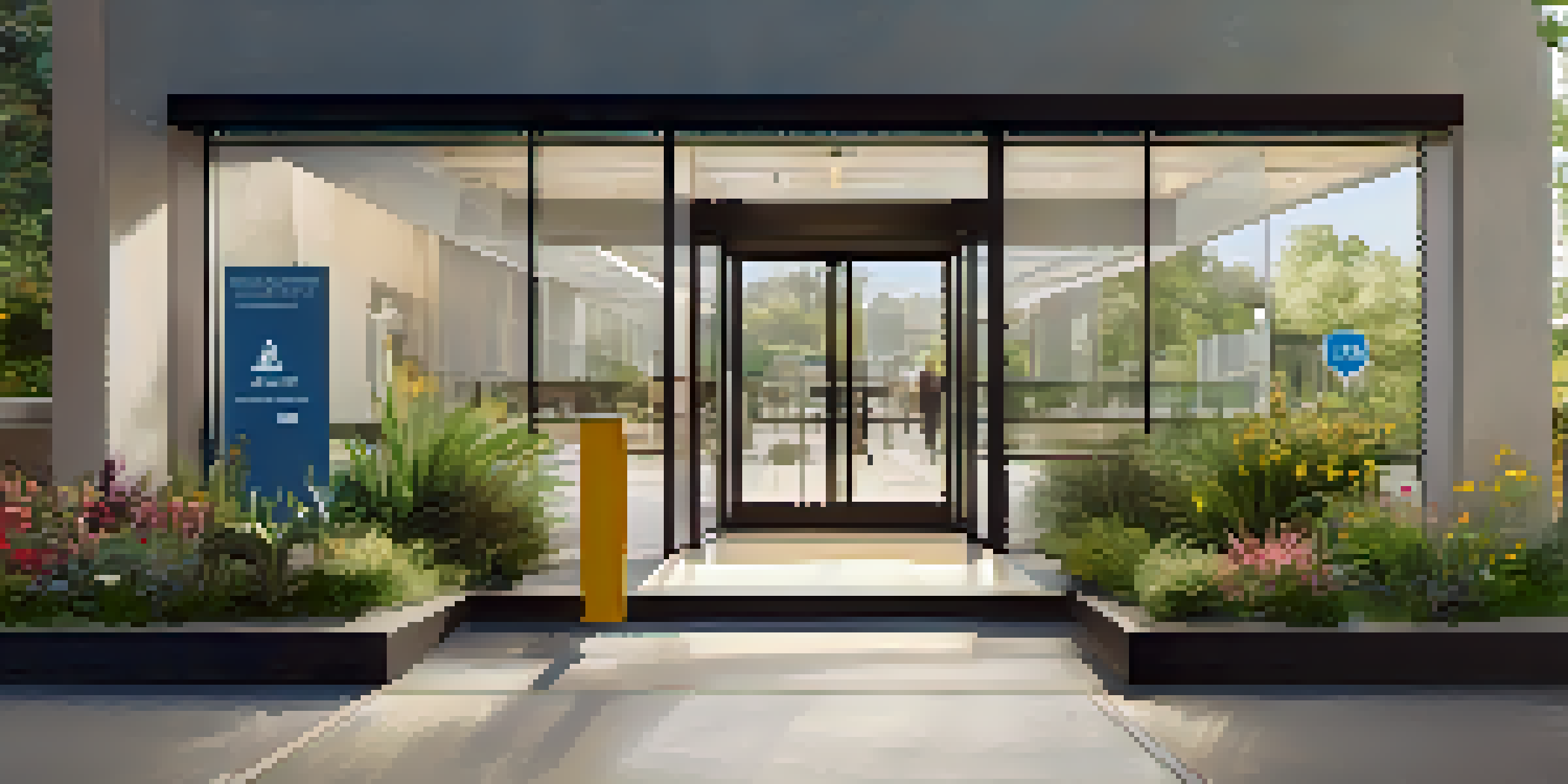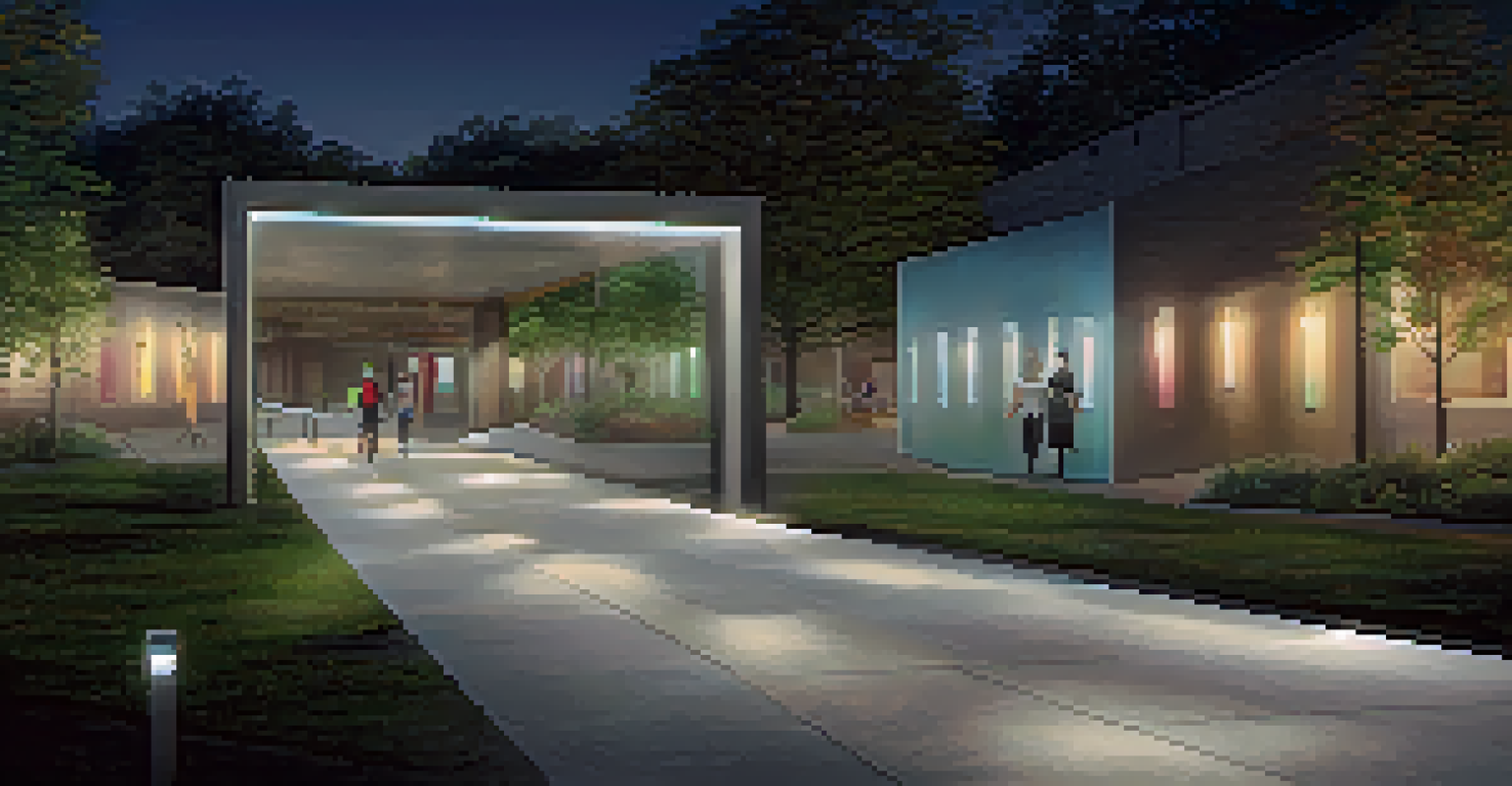How to Create Accessible Entrances for Mobility Challenges

Understanding the Importance of Accessible Entrances
Accessible entrances are crucial for individuals with mobility challenges. They ensure that everyone, regardless of their physical abilities, can enter and navigate spaces comfortably. Think of it as creating a welcoming environment that invites participation from all members of the community.
Accessibility is not a privilege, it's a right.
By enhancing accessibility, we not only comply with legal requirements but also promote inclusivity and equal opportunities. Imagine a world where every person can access buildings without fear or frustration—this is the goal we strive for. It’s about creating spaces where everyone feels valued and respected.
Moreover, accessible entrances benefit everyone, not just those with mobility challenges. For instance, parents with strollers or individuals carrying heavy bags appreciate features like ramps and wider doors. Accessibility is about thoughtful design that enhances usability for all.
Assessing Your Current Entrances for Accessibility
The first step in creating accessible entrances is to assess what you currently have. Take a close look at your doors, ramps, and pathways. Are they easy to navigate? Consider using tools like checklists to identify potential barriers and areas for improvement.

Involving individuals with mobility challenges in the assessment process can provide valuable insights. Their firsthand experiences can highlight issues that might not be immediately apparent to others. By engaging with your community, you foster a sense of ownership and commitment to accessibility.
Accessible Entrances Foster Inclusivity
Creating accessible entrances ensures everyone, regardless of mobility challenges, can navigate spaces comfortably and feel valued.
Taking notes on the dimensions and surfaces of your entrances can help you plan for necessary changes. Look for uneven surfaces, steep slopes, or doors that are difficult to open. This thorough evaluation lays the groundwork for your accessibility improvements.
Incorporating Ramps for Easy Access
Ramps are essential for providing smooth transitions into buildings. They should have a gentle slope, ideally not exceeding a 1:12 ratio, meaning for every inch of height, there should be at least 12 inches of ramp length. This makes it manageable for individuals using wheelchairs or other mobility aids.
The measure of a society is found in how they treat their weakest and most vulnerable citizens.
Consider the material of the ramp as well; it should be sturdy and slip-resistant to ensure safety. Adding handrails can also offer additional support, especially for those who may need a little extra help. Ramps should be well-lit and free of obstructions to guarantee a clear path.
Placing ramps in visible locations increases their usability. If they’re hidden away, people may not know they exist or may feel discouraged from using them. Think of ramps as inviting bridges that connect individuals to the spaces they want to enter.
Choosing the Right Doorways and Entrances
The design of doorways plays a significant role in accessibility. Aim for doors that are at least 32 inches wide to comfortably accommodate wheelchairs and mobility devices. Automatic doors can also be a game-changer, removing the need for users to exert extra effort to enter.
Additionally, ensure that door hardware is easy to operate. Lever handles are often easier for individuals with limited hand strength compared to round knobs. Consider the height of the hardware as well; placing it at a convenient level can make a world of difference.
Regular Maintenance Keeps Access Open
Ongoing maintenance of accessible features is crucial to ensure they remain functional and welcoming for all users.
Don’t forget about door mats and thresholds; these should be flush to the ground to avoid tripping hazards. A well-designed entrance starts with thoughtful decisions about the doors themselves, paving the way for a seamless entry experience.
Creating Clear Pathways Leading to Entrances
Accessibility doesn't stop at the entrance; clear pathways are essential for smooth navigation. Ensure that walkways leading to entrances are wide, well-maintained, and free of obstacles. This might include removing any overgrown plants or furniture that could obstruct the path.
Consider the surface of the pathways as well—smooth, even materials like concrete or asphalt are preferable. Avoid gravel or cobblestones, which can be difficult to traverse for those using mobility aids. A clear path is a welcoming invitation to enter the space.
Lighting is also crucial for pathways. Well-lit areas not only enhance safety but also make navigation easier during evening hours. By creating clear and inviting pathways, you facilitate a more enjoyable experience for everyone.
Incorporating Signage for Enhanced Navigation
Effective signage is key to guiding individuals with mobility challenges. Signs should be clearly visible and placed at eye level, with easy-to-read fonts and symbols. Braille or tactile elements can enhance accessibility for individuals with visual impairments.
Consider using contrasting colors for signs to improve visibility. For example, white text on a dark background is easier to read than similar shades. The goal is to provide clear information about entrances, ramps, and accessible features.
Effective Signage Enhances Navigation
Clear and visible signage aids individuals with mobility challenges by guiding them to accessible entrances and features.
Signage should also include directional arrows that indicate the best routes to accessible entrances. This thoughtful touch can alleviate confusion and help users feel more comfortable navigating your space.
Maintaining Accessibility Features Regularly
Creating accessible entrances is just the beginning; regular maintenance is essential to keep them functional. Regularly inspect ramps, doorways, and pathways for wear and tear. Addressing any issues promptly can prevent larger problems down the line.
It's also beneficial to schedule seasonal maintenance, especially in areas prone to snow or debris accumulation. Ensuring that entrances remain clear and accessible year-round shows a commitment to inclusivity and safety.

Consider gathering feedback from users to identify any areas needing improvement. This ongoing dialogue fosters a culture of accessibility and demonstrates that you value the experiences of everyone who enters your space.